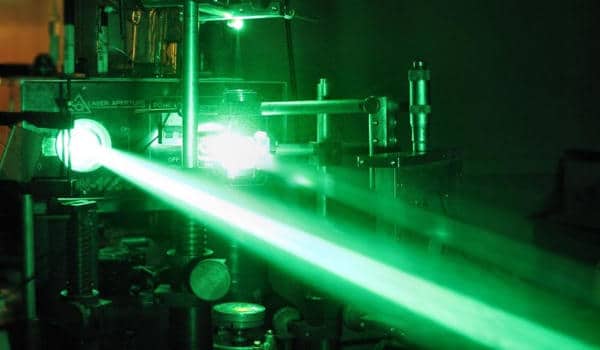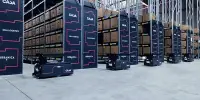A fortunate coincidence has revealed that silicon is a powerful material for use in light manipulation. According to new research, silicon could be one of the most powerful materials for photonic information manipulation, potentially opening up new avenues for the production of lasers and displays.
While the extraordinary success of computer chips has confirmed silicon as the primary material for electronic information control, silicon has a reputation as a poor choice for photonics; no silicon light-emitting diodes, lasers, or displays are commercially available.
In a paper published in the journal Light: Science and Applications, an international team of scientists led by Surrey has demonstrated that silicon is an excellent candidate for creating a device that can control multiple light beams. The discovery means that silicon processors with built-in abilities for light beams to control other beams can now be produced, increasing the speed and efficiency of electronic communications.
New research from the University of Surrey has shown that silicon could be one of the most powerful materials for photonic informational manipulation – opening up new possibilities for the production of lasers and displays.
This is made possible by the electromagnetic spectrum’s wavelength band known as the far-infrared or terahertz region. The effect is based on a property known as nonlinearity, which is used to manipulate laser beams, such as changing their color. Green laser pointers work as follows: they take the output of a low-cost, efficient, but invisible infrared laser diode and convert it to green using a nonlinear crystal that halves the wavelength.
It is no coincidence that the period from the late twentieth to the early twenty-first centuries has been dubbed the Silicon Age. However, as technology has advanced, it appears that silicon may not play as important a role in future devices.
This is due to the fact that silicon is not well suited to all applications. So far, this wonder material has proven to be a poor choice for photonics — the application of light generation, detection, and manipulation that can be used to perform tasks that are not possible with ‘traditional’ electronics. This lack of applicability in photonics is reflected by the fact that there are, as of yet, no commercially available silicon-based displays, lasers, or diodes.

Other types of nonlinearity can generate an output beam with one-third the wavelength or be used to redirect a laser beam to control the direction of the information in the beam. The more nonlinearity there is, the easier it is to control with weaker input beams.
The researchers discovered that silicon has the most powerful nonlinearity of this type ever discovered. Despite the fact that the crystal was cooled to very low cryogenic temperatures for the study, such strong nonlinearities allow for the use of extremely weak beams.
“Our finding was lucky because we weren’t looking for it,” said Ben Murdin, co-author of the study and Professor of Physics at the University of Surrey. We were attempting to comprehend how a very small number of phosphorus atoms in a silicon crystal could be used to construct a quantum computer, as well as how light beams could be used to control quantum information stored in the phosphorus atoms.
“We were astounded to discover that the phosphorus atoms were re-emitting light beams nearly as bright as the extremely powerful laser we were shining on them. We put the data aside for a few years while we considered how to prove where the beams were coming from. It’s a great example of how science happens by accident, as well as how pan-European teams can still collaborate very effectively.”
The physicist from the University of Surrey concludes by reflecting on how this research speaks to the way science progresses and the value of collaboration: “We shelved the data for a couple of years while we thought about proving where the beams were coming from. “It’s a great example of how science happens by accident, as well as how pan-European teams can still work very effectively together.”
The team led by the University of Surrey discovered that silicon has the strongest example of this nonlinearity yet discovered. While the team obtained their results using silicon-doped crystal cooled to low temperatures, they claim that the strength of the nonlinearity they observed means that impressive results could be obtained with extremely weak light beams.













